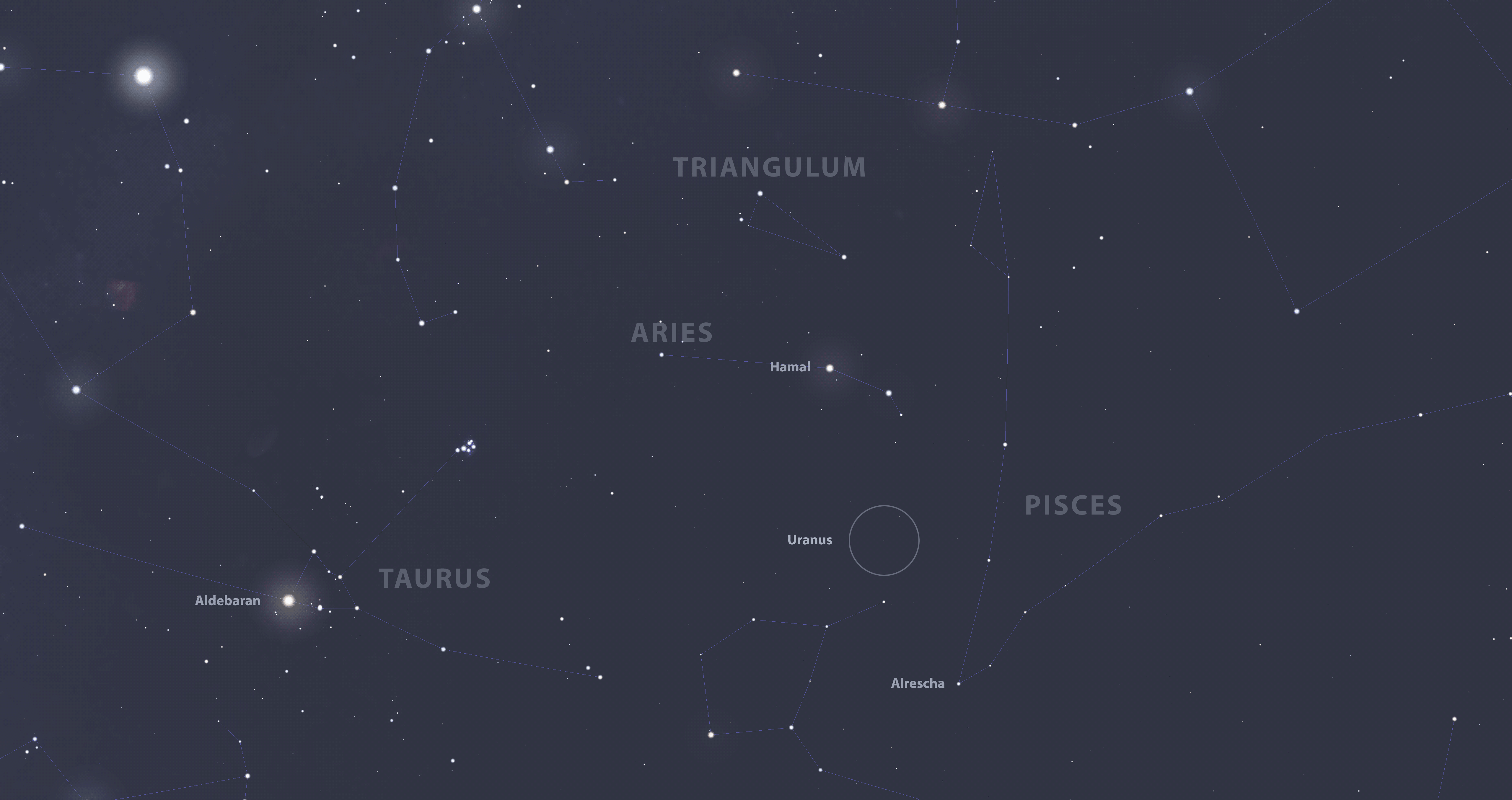
Finding Uranus
November 2019 :
Note: This article may contain outdated information
This article was published in the November 2019 issue of The Skyscraper and likely contains some information that was pertinent only for that month. It is being provided here for historical reference only.
As the Sun sinks lower, and the autumn and winter constellations begin to fill our evening skies, the Northern Hemisphere turns towards the section of the ecliptic that rides high in our sky, providing the most optimum viewing of anything that resides on this side of our solar system.
Uranus has spent most of the past ten years in Pisces (with a brief foray into Cetus in mid-2012) and this past February it crossed into the constellation Aries, where it will remain until mid-2024, when it passes into Taurus.
Devoid of any bright deep-sky objects, but containing two notable double stars, Aries rarely draws our gaze for much other than it being a transitional star pattern, pointing the way to what lies just beyond to the east--the Pleiades, Taurus, and Orion. This year, however, our seventh planet gives us reason to visit this oft-neglected constellation.
A recent question on the TV game show Jeopardy! asked contestants to identify our solar system’s only planet that requires a telescope to see (the answer is Neptune). It isn’t often that we think of Uranus as being visible to the unaided eye, but it does reach magnitude 5.67 in the days nearest its opposition, and under ideal viewing conditions, someone with terrific vision could spot it. Traveling through a more northerly declination brings Uranus higher in our sky than it has been in decades. This allows it to shine above more of the atmospheric haze and skyglow than it has been in decades. This fact, combined with the relatively sparse background far from the dense star fields of the Milky Way, make the next several years an ideal opportunity to attempt naked-eye sightings of Uranus. If you don’t have great vision, or must observe where light pollution blots out much of the fainter objects, Uranus will make for an easy journey with binoculars.

Reaching opposition on October 28 at a distance of 18.8 AU from Earth, Uranus will spend the next several weeks lying approximately equidistant from Hamal (Alpha Arietis - mag. 2.01) and Alrescha (Alpha Piscium - mag. 3.82). If you have trouble spotting Alrescha, another way to find the area is to look at the short base segment of the isosceles triangle of the constellation Triangulum, above Aries, travel through Hamal, and keep going the same direction and distance. Uranus will be the brightest star-like object around.
Through binoculars or a small telescope, Uranus exhibits an unmistakable bluish-green color, but don’t expect to see very much detail on its sub-4 arcsecond disk. Even in large telescopes, the enigmatic planet appears as a rather featureless ball. If you have 10 inches or more aperture, however, you can try for the larger moons of Uranus. Titania and Oberon, each about 14th magnitude, circle within 30-40 arcseconds of the planet. Sky & Telescope has a handy online tool to help locate the moons of Uranus.
Look for Uranus every clear night and note its position amongst the background stars. Try taking wide-field photos (use a tripod and a 10-second exposure) and “blink” them to demonstrate the motion of the planet. Happy hunting, and be sure to share your observations and photos.



